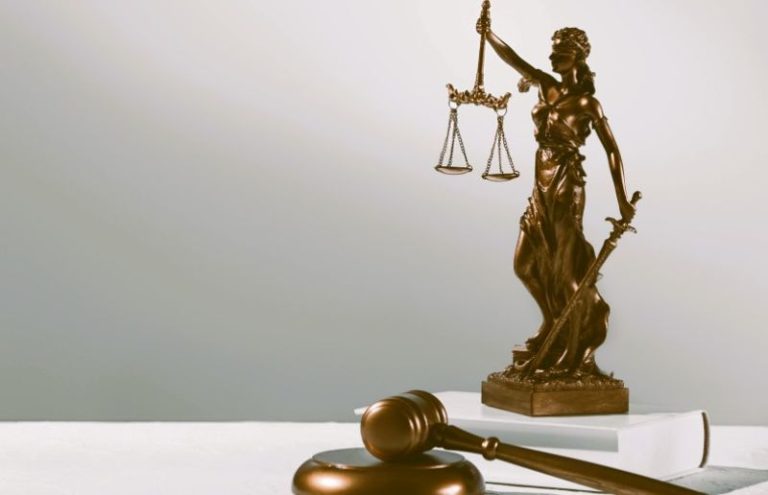

Article III of the Constitution covers the appointment and term of office of federal judges, district judges, and Supreme Court justices.
All, including federal judges, must serve lifelong terms. There are rare exceptions to this, as Article III judges are sometimes removed via impeachment.
Federal judges, in particular, play a huge role in shaping American society. Through their decisions and interpretations of the law, federal judges influence both individual rights and government policies.
What Do Federal Judges Do?
The function of a federal judge is to resolve cases brought before them in a U.S. federal court. The majority of U.S. federal courts have limited jurisdiction. They only hear cases when the Constitution or federal statutes authorize jurisdiction.
Moreover, federal judges may hear both criminal and civil cases. They can set trial dates, sanction defendants, and hold them in contempt.
Federal judges also base their decisions and actions on federal law and procedures. Specific local court systems may set forth some of these.
How Are Legal Cases Allocated?
The chief judge oversees the assignment or allocation of legal cases. This is usually done using a random draw. Sometimes, judges are assigned cases because they have the expertise or are in the relevant location.
There is never a set number of federal judges in the U.S. because of death and retirement. Some time usually passes before these positions are filled. The U.S. Congress can also decrease or increase the number of federal judgeships in different judicial districts.
The number of current court appeals judges is double that of 1950, while district court judges have increased threefold.
The Impact of Judicial Review
Federal judges must interpret the Constitution by deciding how the Constitution applies to different legal issues. Their decisions often have far-reaching consequences for the broader American society.
For instance, federal judges can conduct judicial reviews. This allows them to assess whether existing regulations, laws, and executive actions comply with the Constitution.
If a federal judge declares a policy or law unconstitutional, that law or policy is made redundant or nullified.
The concept of judicial review was first introduced in the Marbury v. Madison case of 1803. Chief Justice John Marshall maintained the judiciary’s role in interpreting the Constitution. Since then, judicial review has been the main part of the federal judiciary’s influence on society.
A prime example is the 1954 Brown v. Board of Education case. In this case, the Supreme Court declared that the laws governing separate public schools for black and white students were unconstitutional.
This may seem like a small decision, but looking back, it is clear that this ruling made a huge difference to the Civil Rights Movement and helped break down segregation laws.
How Federal Judges Influence Public Policy
A federal judge’s influence goes beyond interpreting the law; they also influence public policy. Their rulings often establish new legal precedents, which become the standard for future federal decisions.
Furthermore, these precedents shape overall government actions and societal norms, and they can even impact the U.S. economy.
One of the most notable instances of federal judges influencing public policy was the Roe v. Wade ruling of 1973. At the time, the Supreme Court ruled that the Constitution protects a woman’s right to choose to have an abortion.
This decision shocked some and delighted others. Either way, it had a massive effect on public policy and also led to widespread heated debates. Since the ruling was overturned in 2022, the new legal decision continues to shape the national conversation on reproductive rights.
Another example of public policy influence is the 2010 Citizens United v. Federal Election Commission decision. The Supreme Court ruled that corporate funding of independent political broadcasts may not be limited under the First Amendment. This ruling immediately impacted campaign finance laws and overhauled the American political landscape.
The Branches of Government
The federal judiciary is one of three U.S. government branches. The other two are the executive and legislative branches. The judiciary’s role also serves as a check on the powers of the other branches. Federal judges must ensure that neither branch exceeds its constitutional authority.
This means that federal judges have the authority to review executive actions and legislation. For instance, in United States v. Nixon (1974), the Supreme Court ruled that then-president Richard Nixon had to release the Watergate tapes. This ruling demonstrated that U.S. presidents are not above the law. It also reinforced the judiciary’s role in maintaining the balance of power between the government branches.
Protecting the Rights of Americans
Federal judges play an unmissable role in protecting American rights. They can uphold or expand civil rights, liberties, and other freedoms. Federal judge rulings often address due process, privacy, freedom of speech, and equal legal protection.
For instance, in the Miranda v. Arizona (1966) case, the Supreme Court ruled that all suspects must be read their rights before they are questioned by law enforcement. This ruling created the well-known Miranda Rights, including a suspect’s right to remain silent and get an attorney.
The ruling impacted law enforcement practices by reinforcing the protection of individual rights within the criminal justice system.
Judicial Philosophy
Federal judges’ judicial philosophy also influences American society. This is mainly because their interpretations vary widely, leading to different outcomes in similar cases.
Judicial philosophy typically takes on avenues: originalism and living constitutionalism. Originalists believe the Constitution should be interpreted based on how its text was understood when it was written.
Living constitutionalists argue that the Constitution is a ‘living document’ that should always be interpreted with modern society in mind.
The late Justice Antonin Scalia was an originalist who believed that the Constitution should be interpreted the same way it was in the 18th century. The late Justice Ruth Bader Ginsburg, on the other hand, believed that the Constitution should evolve as society does.
Federal Judges Help the American Legal System Function
Federal judges’ influence reflects not only their judicial philosophy but also the political process that appoints them. As American society evolves, the role of federal judges in shaping that process remains critical.


